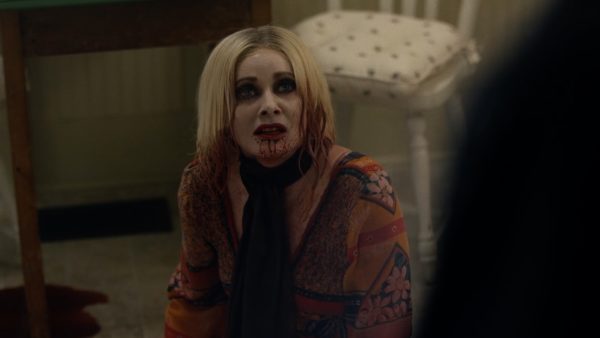
Two genre vets and a hot director team up for a fresh take on vampires. So why is Jakob’s Wife so muddled?
The curated portfolio of film journalist Joe Lipsett
by Joe Lipsett

Two genre vets and a hot director team up for a fresh take on vampires. So why is Jakob’s Wife so muddled?
by Joe Lipsett
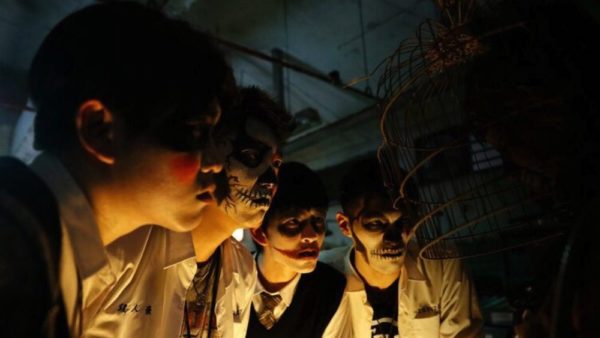
What happens when entitled teens with sociopathic tendencies stumble across a vulnerable victim that also happens to be a serialing killing “monster”? Taiwan director Gideons Ko tackles the murky morality of what constitutes a monster with the confronting and frequently unpleasant Mon Mon Mon MONSTERS.
by Joe Lipsett
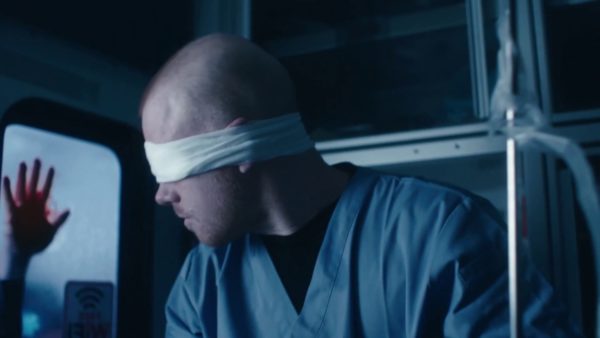
A blind man and a pregnant police officer try to survive a zombie apocalypse. It’s not the start of a joke; it’s Deadsight. [Read more…]
by Joe Lipsett
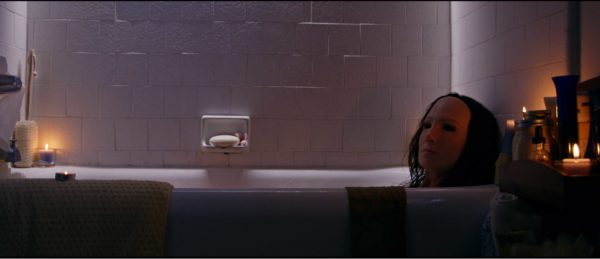
There’s an uncomfortable tension at work in The Cleaning Lady, Jon Knautz’s feature length adaptation of his short of the same name. It’s in the key art for the film (a woman wears a domestic maid’s uniform, bloody gloves and an uncanny-looking mask) and it’s baked into the premise, about the obsessive relationship that develops between Alice (Alexis Kendra, who also co-wrote the script), a successful, albeit flawed aesthetician and her disfigured cleaning woman, Shelly (Rachel Alig).
The Cleaning Lady is first and foremost a stalker film. Alice hires Shelly on the down low to privately clean her apartment, thereby allowing the meek, mysterious woman access to her home. Considering that the film opens with Shelly brewing a rat smoothie and feeding it to a chained woman in an abandoned shipping container, it’s immediately clear that Alice is making a mistake. And just in case it wasn’t obvious, Knautz includes a horror musical cue when Alice first stumbles upon Shelly cleaning her clogged shower drain.
Alice and Shelly are contrasted using straightforward visual cues: Alice is blonde and her apartment is bathed in a sunny yellow colour, whereas Shelly’s dark hair continually hangs in her face and her home is located off the beaten path in the woods. Alice is also pert and chipper, good at casual small talk and maintaining her physique with regular yoga classes. Shelly is barely verbal, going about her business quietly with her head down. It’s only when Alice hires and then befriends Shelly that the latter begins to open up; alas, it simultaneously initiates her unhealthy obsession with Alice’s seemingly perfect life.
The fact that Alice’s “perfection” is a facade isn’t evident to Shelly, who idolizes her new employer. The reality is that Alice is a slave to her vices, which range from small – her inability to quit smoking – to large – carrying on an affair with a married man, Michael (Stelio Savante). The discovery that Alice isn’t living up to Shelly’s expectations push the cleaning woman over the edge and, naturally, violence follows.
Artificiality as a “cover up” is an obvious, but effective metaphor for both Alice and Shelly. Alice only looks put together because she has the proper make-up, clothes and body, whereas Shelly’s refusal to play dress up for the world – opting for ball caps, no make-up and baggy clothes – immediately distinguish her as an outsider.
And therein lies the problem. Anything interesting that The Cleaning Lady has to say about living fake lives, dressing to pass, or using a make-over as cover-up (literally and figuratively) is undone by a script that favours exploitation and titillation over genuine human emotion.
Not unlike Blumhouse’s recent thriller Ma, The Cleaning Lady wants to explore how childhood trauma contributes to the development of adult victimizers. In this case, sporadic flashbacks introduce a young Shelly (Mykayla Sohn), a minor being sexually exploited by her mother, pimped out to random men in exchange for money. These glimpses into the past have the same sweaty, grimy sheen as the flashbacks in Black Xmas, and young Shelly’s infantile interest in dolls is nicely juxtaposed by the decrepitness of the rest of the house and the leering, greasy pedophiles. It’s all suitably icky.
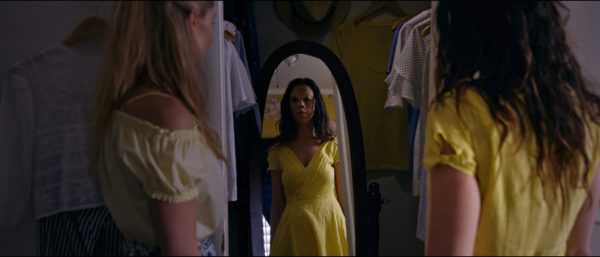
It’s also on-the-nose obvious; the flashbacks serve as a narrative shorthand to “explain” adult Shelly’s psychosis. But, while it is not uncommon in horror to assign a childhood trauma to villains, here it is both too fleeting and too simplistic. The Cleaning Lady lacks finesse, resulting in a series of clunky flashbacks that trade in manipulative exploitation and seemingly exist to pay-off the film’s obvious conclusion.
Despite the clumsy use of overly simplistic pop psychology to explain Shelly’s motivation, The Cleaning Lady does have a number of elements worth recommending. The performances by both lead actresses are solid and Knautz makes good use of a few key locations to maintain a claustrophobic feel as Shelly slowly collapses the boundaries between her and her prey. There are several set pieces that really connect, the creepiest of which is a late night sojourn by Shelly into Alice’s bedroom to make a latex mask of Alice’s “perfect” visage. It’s deeply unsettling, and makes for a fascinating mirroring effect when the prosthetic becomes Shelly’s trademark mask.
Speaking of make-up, the effects are a bit of a mixed bag: for every effect that works (Shelly’s burns), there’s another that doesn’t quite hit the mark (a torture scene involving acid is particularly unconvincing). This is forgivable, however, considering that budget undoubtedly played a factor.
Unfortunately the film is undone by its undercooked script. In addition to the explanation for Shelly’s mental state, there’s an abrupt narrative shift in the last act that derails the film’s focus by thrusting a heretofore peripheral character into the spotlight. It simply does not work and the poorly executed creative decision comes off as a cheap (and predictable) attempt to inject tension (and increase the body count), but actually just muddles the narrative at a time when it should be crescendoing. It’s an unfortunate development that negatively impacts the film’s ending and the film would have been better off ironing it out of the script early on.
The Bottom Line: The Cleaning Lady has strong lead performances, a creepy premise and a few unsettling set pieces, but it is undone by poor script decisions, particularly the cheap reliance on exploitative flashbacks. 2.5/5
https://www.youtube.com/watch?v=l92FHpCtysU